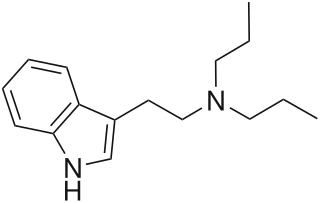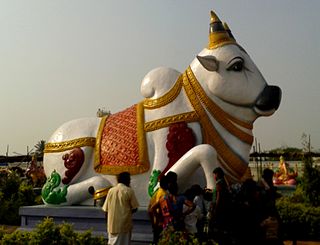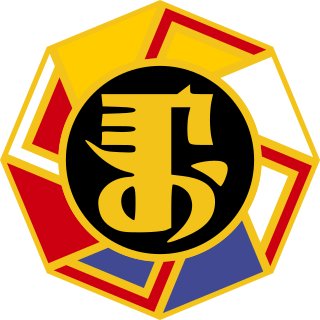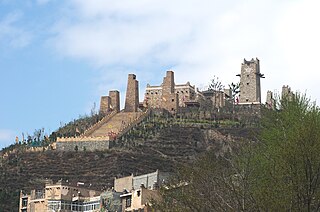Related Research Articles

Shamanism or samanism is a religious practice that involves a practitioner interacting with the spirit world through altered states of consciousness, such as trance. The goal of this is usually to direct spirits or spiritual energies into the physical world for the purpose of healing, divination, or to aid human beings in some other way.

Entheogens are psychoactive substances, including psychedelic drugs, used in sacred contexts for inducing spiritual development among other reasons.

N,N-Dipropyltryptamine (DPT) is a psychedelic entheogen belonging to the tryptamine family. Use as a designer drug has been documented by law enforcement officials since as early as 1968. However, potential therapeutic use was not investigated until the 1970s. It is found either as a crystalline hydrochloride salt or as an oily or crystalline base. It has not been found to occur endogenously. It is a close structural homologue of dimethyltryptamine and diethyltryptamine.

Religion in China is diverse and most Chinese people are either non-religious or practice a combination of Buddhism and Taoism with a Confucian worldview, which is collectively termed as Chinese folk religion.

Animal worship is an umbrella term designating religious or ritual practices involving animals. This includes the worship of animal deities or animal sacrifice. An animal 'cult' is formed when a species is taken to represent a religious figure. Animal cults can be classified according to their formal features or by their symbolic content.

Chinese folk religion, also known as Chinese popular religion, comprehends a range of traditional religious practices of Han Chinese, including the Chinese diaspora. Vivienne Wee described it as "an empty bowl, which can variously be filled with the contents of institutionalised religions such as Buddhism, Taoism, Confucianism and Chinese syncretic religions". This includes the veneration of shen (spirits) and ancestors. Worship is devoted to deities and immortals, who can be deities of places or natural phenomena, of human behaviour, or founders of family lineages. Stories of these gods are collected into the body of Chinese mythology. By the Song dynasty (960–1279), these practices had been blended with Buddhist, Confucian, and Taoist teachings to form the popular religious system which has lasted in many ways until the present day. The present day government of mainland China, like the imperial dynasties, tolerates popular religious organizations if they bolster social stability but suppresses or persecutes those that they fear would undermine it.

Jeremy Narby is a Canadian anthropologist and author.

The Eastern religions are the religions which originated in East, South and Southeast Asia and thus have dissimilarities with Western, African and Iranian religions. Eastern religions include:
Urban shamanism distinguishes traditional shamanism found in indigenous societies from Western adaptations that draw on contemporary and modern roots. Urban shamanism is practiced primarily by people who do not originate in a traditional indigenous society and who create unique methods that do not follow or claim authenticity in any prior tradition. Urban shamanism traces its beginnings to efforts by Westerners to come to terms with psychoactive plant experiences using their own modern frames of cultural reference influenced by, but outside of, the indigenous rites in which plant medicine is traditionally based. The related terms digital shamanism and digital psychedelia are schools of thought born out of the convergence of technological changes, art movements, and Eastern philosophies during the late 20th century. They parallel and are often associated with technopaganism. In practice, the digital psychedelic process is the fusion of the biological and technological to seek self-knowledge.
The Inner Light or Inner Light may refer to:

Jonathan Ott is an ethnobotanist, writer, translator, publisher, natural products chemist and botanical researcher in the area of entheogens and their cultural and historical uses, and helped coin the term "entheogen".

Tengrism is a religion originating in the Eurasian steppes, based on shamanism and animism. It generally involves the titular sky god Tengri, who is not considered a deity in the usual sense but a personification of the universe. According to some scholars, adherents of Tengrism view the purpose of life to be in harmony with the universe.
Entheogenic drugs have been used by various groups for thousands of years. There are numerous historical reports as well as modern, contemporary reports of indigenous groups using entheogens, chemical substances used in a religious, shamanic, or spiritual context.

Religion in South Korea is diverse. Most South Koreans have no religion. Buddhism and Christianity are the dominant confessions among those who affiliate with a formal religion. Buddhism, which arrived in Korea in 372 AD, has thousands of temples built across the country.

Manchu folk religion or Manchu traditional religion is the ethnic religion practiced by most of the Manchu people, the major Tungusic group in China. It can also be called Manchu shamanism because the word "shaman" being originally from Tungusic šamán, later applied by Western scholars to similar religious practices in other cultures.

Vietnamese folk religion is a group of spiritual beliefs and practices adhered by the Vietnamese people. About 86% of the population in Vietnam are reported irreligious, but are associated with this tradition.
The consumption of hallucinogenic plants as entheogens goes back to thousands of years. Psychoactive plants contain hallucinogenic particles that provoke an altered state of consciousness, which are known to have been used during spiritual rituals among cultures such as the Aztec, the Maya, and Inca. The Maya are indigenous people of Mexico and Central America that had significant access to hallucinogenic substances. Archaeological, ethnohistorical, and ethnographic data show that Mesoamerican cultures used psychedelic substances in therapeutic and religious rituals. The consumption of many of these substances dates back to the Olmec era ; however, Mayan religious texts reveal more information about the Aztec and Mayan civilization. These substances are considered entheogens because they were used to communicate with divine powers. "Entheogen," an alternative term for hallucinogen or psychedelic drug, derived from ancient Greek words ἔνθεος and γενέσθαι. This neologism was coined in 1979 by a group of ethnobotanists and scholars of mythology. Some authors claim entheogens have been used by priests throughout history, with appearances in prehistoric cave art such as a cave painting at Tassili n'Ajjer, Algeria that dates to roughly 8000 BP. Shamans in Mesoamerica served to diagnose the cause of illness by seeking wisdom through a transformational experience by consuming drugs to learn the crisis of the illness

Qiang folk religion is the indigenous religion of the majority of the Qiang people, an ethnic group of Sichuan (China) tightly related to the Han Chinese and the Tibetans. It is pantheistic, involving the worship of a variety of gods of nature and of human affairs, including Qiang progenitors. White stones are worshipped as it is believed they can be invested with the power of some gods through rituals. They believe in an overarching God, called Mubyasei, which is connected to the Chinese concept of Tian and clearly identified by the Qiang with the Taoist-originated Jade Emperor.
Shamanism is a religious practice present in various cultures and religions around the world. Shamanism takes on many different forms, which vary greatly by region and culture and are shaped by the distinct histories of its practitioners.
References
- ↑ Jim DeKorne (26 July 2011). Psychedelic Shamanism, Updated Edition: The Cultivation, Preparation, and Shamanic Use of Psychotropic Plants. North Atlantic Books. p. 81. ISBN 978-1-58394-290-1.
- ↑ Kaplan, Eric. "Still hippies, after all these years". Spy Magazine (October 1987): 61.
- ↑ Shulgin, Alexander and Ann (1997). TIHKAL (1st ed.). California, US: Transform Press. p. 430. ISBN 0-9630096-9-9.